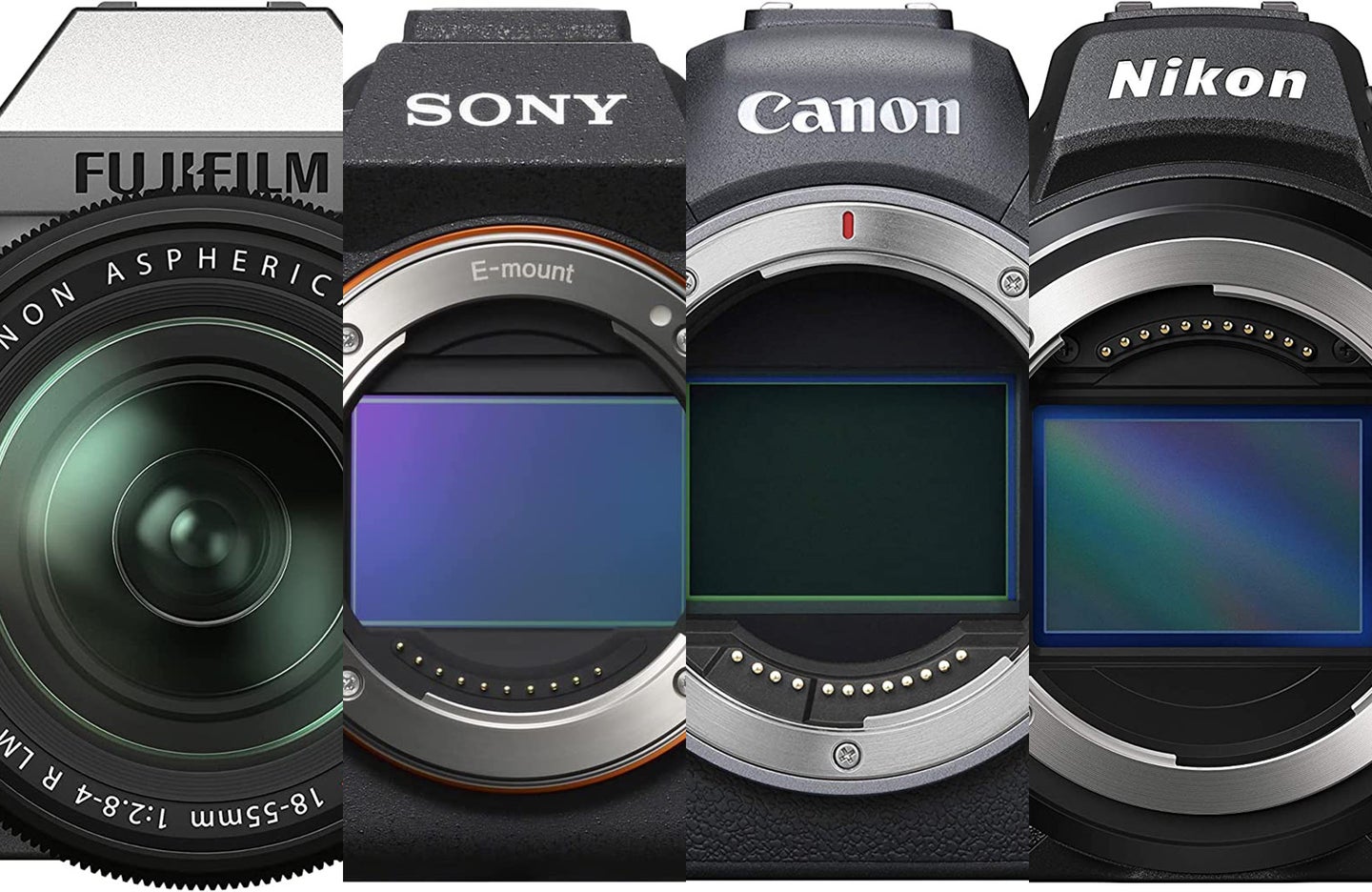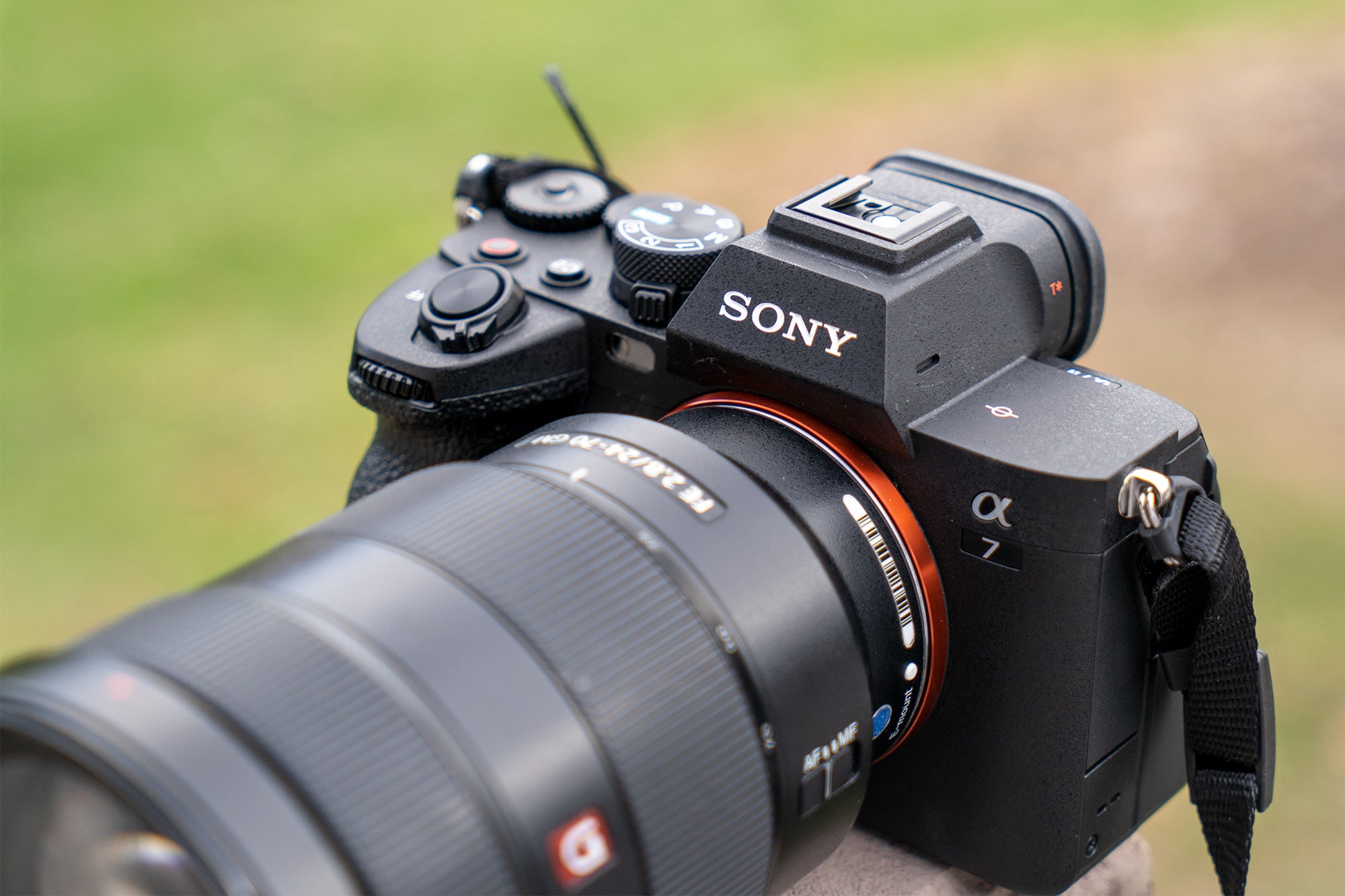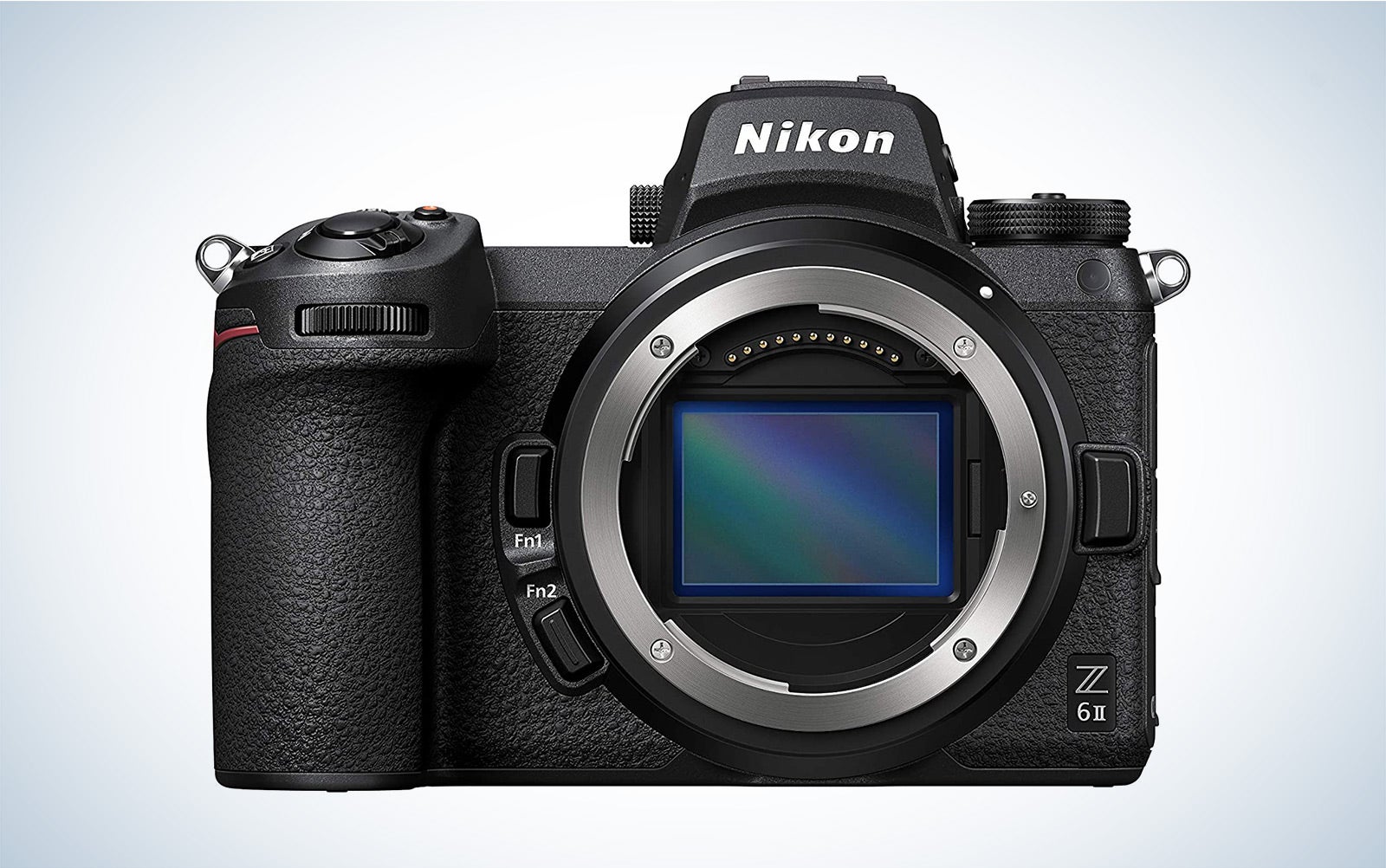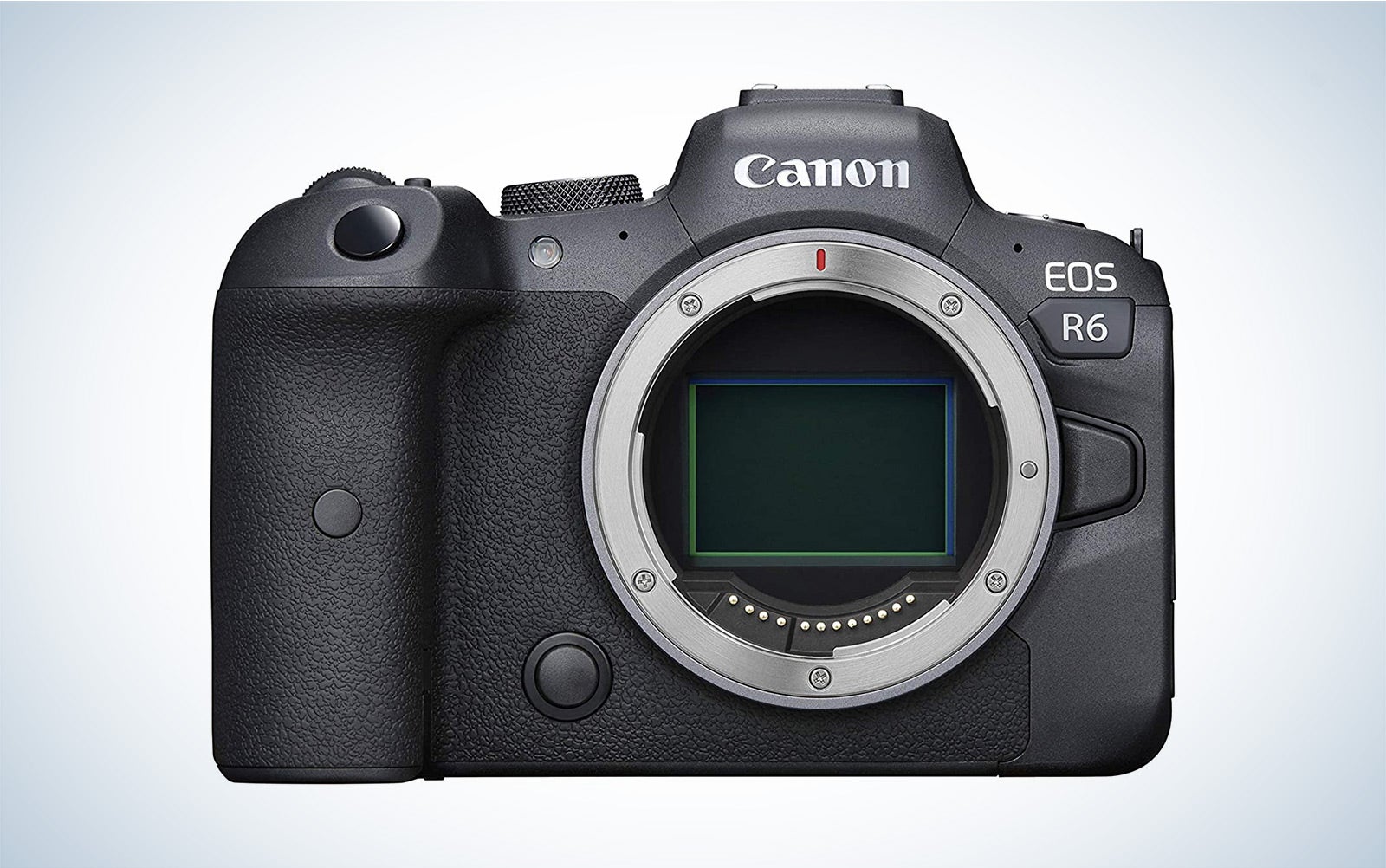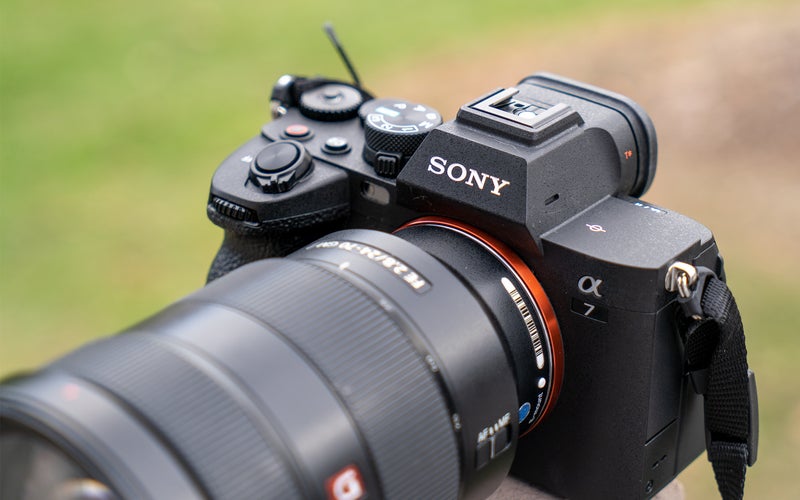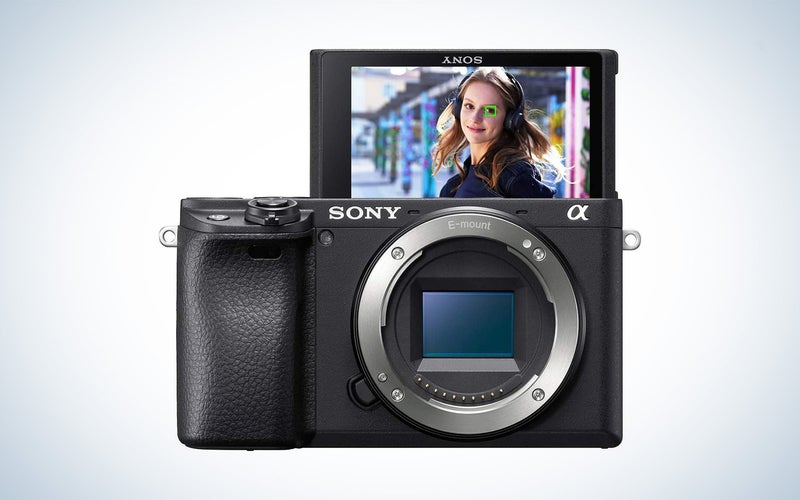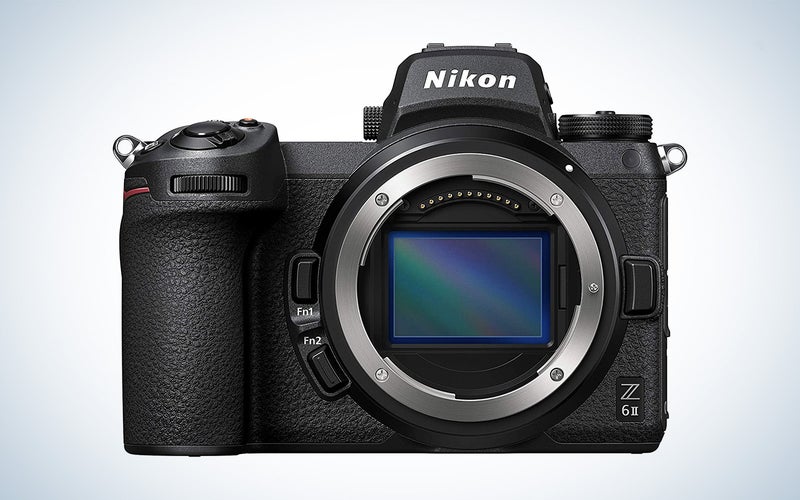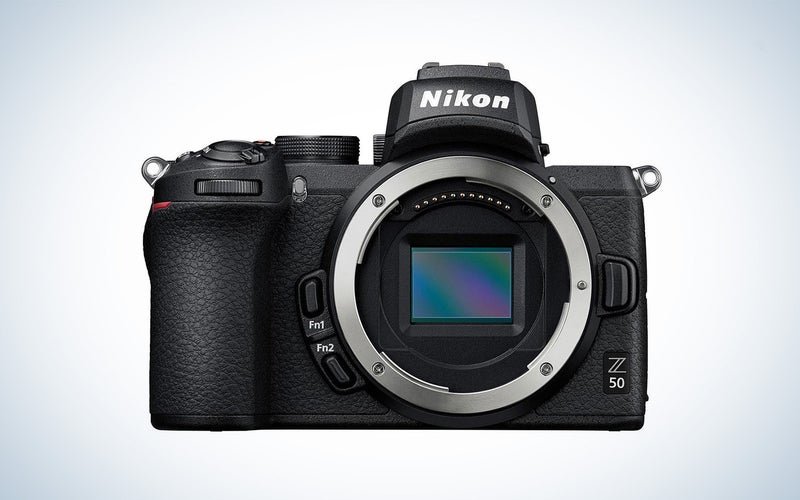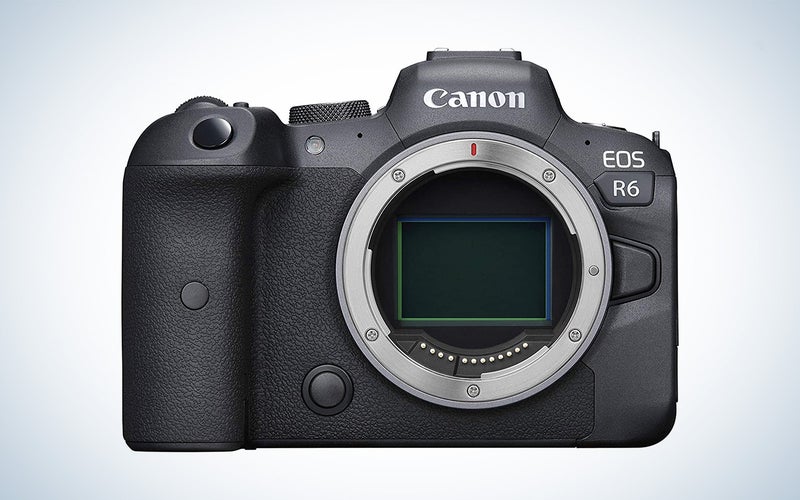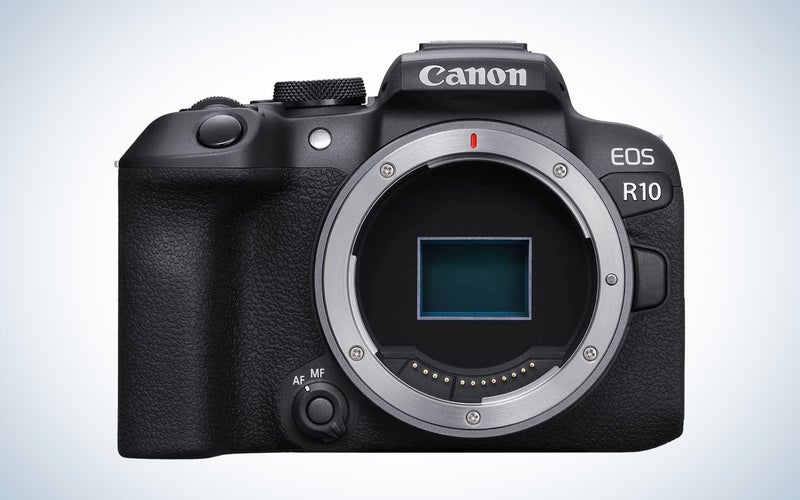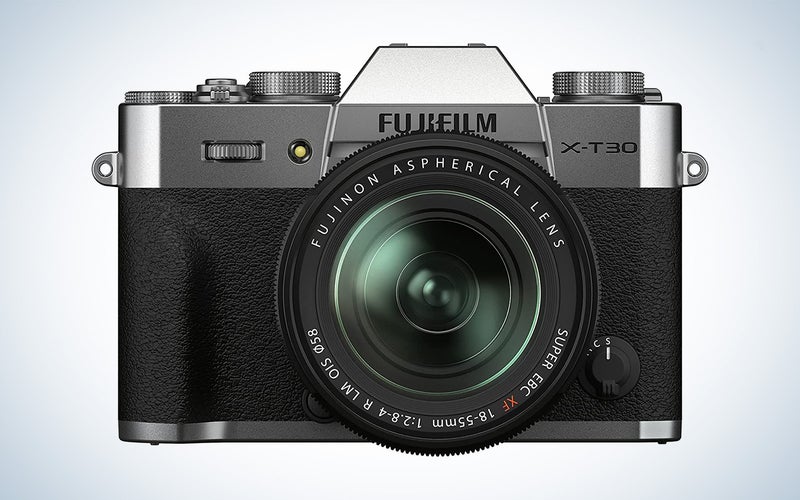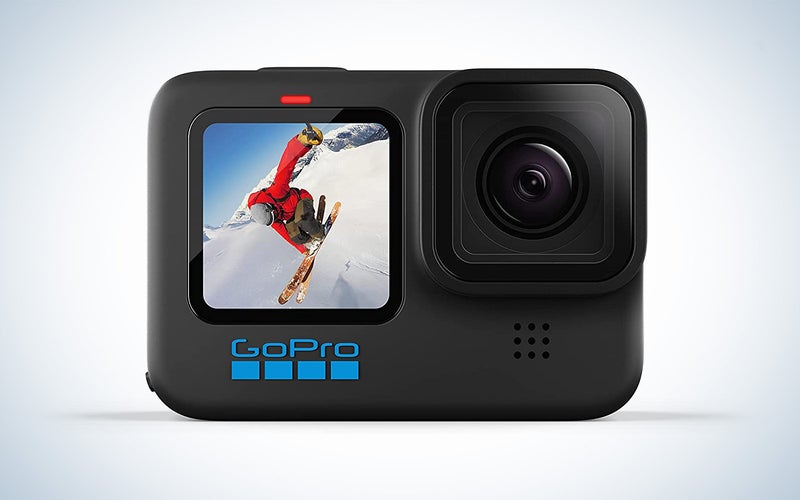We may earn revenue from the products available on this page and participate in affiliate programs. Learn more ›
Whether you want to capture more memories with your animals or share photos of your furry pals to gain social media fame, you’ll have to choose the right camera for pet photography. It can even help you photograph other people’s pets as a side hustle once your skills are up to snuff. And while there aren’t hyper-specific cameras intended for the genre, the best cameras for pet photography will aid you in getting reliable, consistent, frame-worthy results.
- Best overall Sony: Sony a7 IV
- Best entry-level Sony: Sony Alpha a6400
- Best overall Nikon: Nikon Z 6 II
- Best entry-level Nikon: Nikon Z50
- Best overall Canon: Canon EOS R6
- Best entry-level Canon: Canon EOS R10
- Best Fuji: Fujifilm X-T30 II
- Best for adventures: GoPro Hero 10
How we picked the best cameras for pet photography
The writers and editors have been involved in about every aspect of the photography industry for decades and have experience with every major camera system. When selecting the best cameras for pet photography, we chose an entry-level and more advanced option for the major camera brands. Switching systems is not economical for most, so we wanted to provide options that enabled users to stick within the brand they already have, if relevant.
As mentioned throughout, autofocus and burst modes were the primary drivers for which cameras we picked. We also looked at sensor size, resolution, lens availability, weatherproofing, and pricing. Lastly, we relied on a mix of hands-on experience, editorial reviews, and user feedback in selecting the cameras featured here.
The best cameras for pet photography: Reviews & Recommendations
Best overall Sony: Sony a7 IV
Abby Ferguson
Why it made the cut: With incredibly fast autofocus, Sony’s a7 IV will accurately and quickly focus on your pet, no matter where they move in the frame. It’s also a true hybrid camera, so you can get great videos of your pets as well.
Key features:
- Frames per second: Up to 10 fps for up to 828 raw frames or unlimited JPEG frames
- Sensor: 33MP Full frame
- Max video quality: 4K 60p
- Weight: 1.4 pounds
Pros
- Exceptional autofocus includes animal eye AF
- Excellent image and video quality
- Lightweight body
- Wide dynamic range
Cons
- Only 10 fps
Sony has been leading the way in autofocus abilities and continued that trend in the fourth version of its popular A7 line. It utilizes Sony’s Real-time Tracking AF, which allows you to tap on your subject on the screen or half press the shutter to lock on. Then, no matter where your subject goes in the frame, the focus will stay on them.
Sony’s autofocus also includes a specific Animal Eye AF, which automatically identifies and focuses on the eyes of dogs and cats. It makes it easier than ever to autofocus on pets and also allows you to trust your focus will be in the right spot even when shooting with wider apertures.
Video is becoming more and more prominent in the social media and marketing worlds. So, if you are a pet content creator, you need to be able to create attractive videos to keep up. Luckily the a7 IV is a full hybrid camera with impressive video abilities. It can shoot 4K video at 60p, has impressive slow motion modes, and provides excellent in-camera stabilization.
The A7 IV can only shoot at 6 fps for lossless raw files. But, you get 10 fps with compressed raws, which still provides plenty of dynamic range and data for recovering shadows and highlights. And while you want good burst shooting in the best cameras for pet photography, you don’t want to overshoot and give yourself a ton to cull and edit at the end of the day.
Want to know more? You can read my full review on the a7 IV here.
Best entry-level Sony: Sony Alpha a6400
Sony
Why it made the cut: This small camera produces impressive image and video quality and includes Sony’s impressively effective autofocus system.
Key features:
- Frames per second: Up to 11 fps for up to 46 raw frames or 116 JPEG frames
- Sensor: 24.2MP APS-C
- Max video quality: 4K 30p
- Weight: 14.22 ounces
Pros
- Impressive focus with animal eye AF
- Compact and lightweight body
- Excellent image quality
- Slow motion up to 120 fps
Cons
- Autofocus options can be confusing to learn
- No in-body stabilization
If you want to take advantage of Sony’s autofocus system but don’t want to spend the money required for a full frame camera, the a6400 is an excellent alternative. Its autofocus is extremely fast, with Sony claiming it can lock on to a subject in 0.02 seconds. Those numbers vary widely in the real world, of course, but we can attest that it focuses quickly. Even if your pet is in motion, it will be able to find and focus on them instantly in most situations.
Being an APS-C camera, it is very compact and lightweight. At just 4.7 x 2.6 x 2.4 inches, you’ll easily be able to throw it in a small bag for trips. And with a pancake lens, you can even fit the entire setup in a jacket pocket, so it’s easily accessible when on walks.
Some might expect such a small, affordable camera to suffer in image and video quality, but that isn’t the case here. It offers excellent dynamic range and low light performance. Even indoor photos of your pets will turn out. And this little camera has truly outstanding video features. It’s capable of vibrant and sharp 4K 30p video or 1080p at up to 120fps if you want slow motion videos.
The A6400, unfortunately, lacks in-body stabilization. We’d suggest getting a lens with stabilization or using a gimbal if you want to record a lot of videos.
Best overall Nikon: Nikon Z6 II
Nikon
Why it made the cut: The Z6 II Provides a solid mix of resolution with speed and overall image quality.
Key features:
- Frames per second: Up to 14 fps for up to 139 raw frames or 200 JPEG frames
- Sensor: 24.5MP full frame
- Max video quality: 4K 30p
- Weight: 1.4 pounds
Pros
- Excellent low light performance
- Great burst shooting
- Rugged build quality
- Good video with in-body stabilization
Cons
- Battery life could be better
- Autofocus hunts with big shifts
The Z6 II is Nikon’s second iteration of the Z6, and though it didn’t reinvent the wheel, it did bring some welcome updates. The most noteworthy change, especially for pet photography, is the addition of a second EXPEED 6 image processor. The dual image processors allow for the best burst shooting in its class, coming in at 14 fps. That comes in particularly handy when getting action shots during play time.
The dual processors also improved autofocus abilities, with better low light focusing and the addition of animal eye detection in Wide area AF mode. Unfortunately, Nikon’s autofocus still isn’t quite as good in action situations as Canon or Sony’s, but it is no slouch. Nikon also shows some advantages in very low-light situations. And the Z6 II is cheaper than the R6 and a7 IV, which is a plus.
If you are already a Nikon user, you’ve likely come to appreciate its cameras’ rugged bodies and logical ergonomics. That continued with the Z6 II, which features a weather-sealed body. And despite its compact and lightweight size, it still has a nice grip on it for better control.
Finally, and perhaps most importantly, the Z6 II has really excellent image quality, even when at higher ISOs. Capturing pets on the move typically requires fast shutter speeds, which often translate into higher-ISO shooting. It is overall a very well-rounded camera at a reasonable price compared to its peers.
Best entry-level Nikon: Nikon Z50
Nikon
Why it made the cut: It’s a tiny but sturdy APS-C camera that captures 11 fps when shooting JPEG files or 9 fps in raw for getting action shots of your pets.
Key features:
- Frames per second: Up to 11 fps
- Sensor: 20.9MP APS-C
- Max video quality: 4K 30p
- Weight: 13.93 ounces
Pros
- Very compact and lightweight
- Good video quality
- Excellent dynamic range
- Image quality is very good
Cons
- Autofocus is a little slow
- Limited native lenses
Nikon’s first ASP-C mirrorless camera packs advanced but easy-to-use features in a tiny body. It’s an especially great option for Nikon DSLR users wanting to switch to mirrorless, as you’ll be able to use your existing lenses with an adapter.
As with other Nikon cameras, you’ll get great ergonomics in the Z50. It employs Nikon’s simple-to-use user interface, making it straightforward to adjust settings so that you can focus on shooting instead of sifting through menus. The autofocus is fast in acquiring focus and has face and eye detection. It does lag a little with fast-moving subjects, so this won’t be the camera for you if you photograph speedy pets, but it will do more than fine for most situations.
In terms of image quality, it produces very attractive images thanks to Nikon’s excellent color science. And the Z50 is capable of 4K video, so you can get high-quality video shots of your pets. In addition, it has speedy burst shooting with 11 fps when shooting JPEG or 9 fps with raw files. The dynamic range is also excellent, with strong low light performance, opening up the possibilities for when you photograph your furry (or scaly) friends.
Best overall Canon: Canon EOS R6
Canon
Why it made the cut: The R6 is an impressive enthusiast-level camera capable of up to 20 fps for the ultimate action shots.
Key features:
- Frames per second: Electronic shutter: Up to 20 fps for up to 1000 JPEGs or 240 raw frames | Mechanical shutter: Up to 12 fps for up to 1000 JPEGs or 240 raw frames
- Sensor: 20MP full frame
- Max video quality: 4K 60p
- Weight: 1.5 pounds
Pros
- Impressive burst shooting
- Exceptional autofocus
- In-body image stabilization
- Beautiful image quality
Cons
- Tends to overheat when shooting video
While it can’t match the 45-megapixel resolution of its big sibling, the R5, the Canon R6 strikes an optimal balance of image quality and speed. The electronic shutter enables shooting speeds up to 20 fps for 240 raw files or 1000 JPEGs. That’s faster than any other camera at this level on the market and will ensure you don’t miss the perfect moment in a sequence.
Canon is challenging Sony in the autofocus world and has its own impressive autofocus system that rivals or even surpasses Sony’s in some circumstances. There are eight different AF modes, which may be a bit confusing to beginners, but once you get your settings dialed in, it’s basically foolproof. The autofocus system is fast enough to keep up with the speedy burst shooting, meaning you’ll end up with more in-focus images during action shots. And 6,072 selectable focus points cover 100% of the frame. So no matter where your subject is, you’ll be able to focus on them.
One of the most noteworthy features of this camera is the in-body stabilization. The R6 was the first Canon camera to feature in-body stabilization, and it did it right on its first try. The system is in constant communication with the in-lens stabilization and, when paired with certain lenses, results in up to eight stops of stabilization. That will help significantly with low light shooting, if you can get your subjects to hold still, of course. And it will make your videos smoother if you don’t have a gimbal, which is a boon.
Best entry-level Canon: Canon EOS R10
Canon
Why it made the cut: Its fast and intelligent autofocus can recognize and track animals, and it’s capable of up to 23 fps with the electronic shutter for fast bursts of action.
Key features:
- Frames per second: Electronic shutter: Up to 23 fps for up to 70 JPEGs or 21 raw frames | Mechanical shutter: Up to 15 fps for up to 460 JPEGs or 20 raw frames
- Sensor: 24.2MP APS-C
- Max video quality: 4K 30p, 4K 60p with crop
- Weight: 15.1 ounces
Pros
- Excellent subject recognition
- Fast autofocus
- Good ergonomics
- Fast burst shooting
Cons
- Not weather sealed
- No stabilization
Canon released the R10 as a mirrorless follow-up for its incredibly popular Rebel lineup. Despite its status as an entry-level camera, it is a powerful little package with some very impressive features. For animal photographers, the burst mode is especially useful. When using the electronic shutter, you’ll be able to get 23 fps. The downside is that the buffer capacity is only 21 raw frames, which isn’t very high. But, if you use a fast memory card that clears quickly so you can get back to the action.
The other big selling point for pet photography is the truly impressive autofocus. Usually, entry-level cameras like this also have entry-level focusing, but Canon fitted the R10 with a much higher-end system. It has animal priority detection, searching for animal eyes across the frame. It can even find and focus on eyes when there are elements in the foreground partially blocking the subject, which is incredibly useful with subjects that won’t sit still. If you have more than one pet in the frame, the camera will select the closest one, but you can use the joystick to toggle between them.
Of course, you would expect some high-end features to be missing at this price point. Unfortunately, there is no weather sealing on this camera. It will still hold up to day-to-day situations and the occasional water splash, but don’t take it out in a downpour. And there is no sensor-based stabilization. You may want to get a lens with stabilization as a result.
Best Fuji: Fujifilm X-T30 II
Fujifilm
Why it made the cut: Fujifilm’s X-T30 II is an attractive camera with the fastest burst shooting of any on our list. And the autofocus can successfully track subjects during those bursts.
Key features:
- Frames per second: Mechanical shutter: 8 fps | Electronic shutter: Up to 30 fps at a 1.25x crop for up to 29 JPEGs or 17 raw frames
- Sensor: 26.1MP APS-C
- Max video quality: 4K 30p
- Weight: 11.2 ounces
Pros
- Very fast burst shooting with focus tracking
- Built-in, high-quality film simulation profiles
- Very lightweight
- Easy to use controls
Cons
- Battery life is limited
- Buffer capacity isn’t great
Despite its relatively affordable price, the X-T30 II is one capable camera that should rank at the top of all APS-C mirrorless options. It has one of the most attractive camera designs, harkening back to film cameras. And it comes with Fuji’s built-in film simulation profiles that result in beautiful images–including JPEGs–right out of the camera. So if you don’t want to mess with editing but still want something more exciting than a standard image, this is the way to go.
At 30 fps, it has the fastest burst shooting of any others on our list. Unfortunately, it does that at a 1.25x crop, but you can still get a speedy 20 fps at full view. It is limited to just 17 raw files or 29 JPEGs, and the slower UHS-I memory card slot means it won’t clear all that quickly. But, for short bursts of action, this is the clear winner. And in reality, you don’t want to shoot hugely long bursts because it makes editing a nightmare later on.
The autofocus is also excellent in the X-T30 II. It can successfully track subjects during that fast burst shooting, giving you more usable action shots. It’s also fast to pickup focus–Fuji says it takes just 0.02 seconds–and it’s very accurate. You’ll get eye and face detection and excellent low light focusing for those tricky lighting situations.
Best for adventures: GoPro Hero 10
GoPro
Why it made the cut: The Hero 10 is waterproof to 33 feet without housing, has mind-boggling image stabilization for videos, and produces 23MP photos. It’s the winner for any adventure shots.
Key features:
- Frames per second: 25 fps
- Sensor: 23MP
- Max video quality: 5.3K 60p
- Weight: 5.6 ounces
Pros
- Waterproof to 33 feet without housing
- Exceptional stabilization
- High-quality photos
- Excellent slow-motion footage
Cons
- Low light performance isn’t great
If you like to adventure with your pup–or cat–the GoPro Hero 10 is an excellent tool to have along to capture unique images. The Hero 10 is one tough camera, even without a case. For example, it’s waterproof down to 33 feet, which is deeper than you’ll need to swim to get epic underwater shots of your dog. And it will easily survive cruising down ski slopes with your pooch as well.
For video creators, the stabilization in this little black box is amazing. You can stick it on your dog while they are running, and the footage will still look smooth. It’s capable of up to 5.3K at 60p, and videos look sharp, vibrant, and professional. It can also shoot 8x slow motion at 2.7K to get goofy shots of your pets playing or being dramatic.
Still photography is a secondary feature in the GoPro, but the quality has drastically improved compared to earlier models. It produces 23-megapixel images, and you can shoot raw photos in both single shot and burst modes, giving you more control over editing should you want it.
And it responds to voice commands, so you can get epic selfies of you and your pet without needing to hold the camera or have someone else take the shot. The company even sells a specific dog mount for getting a mutt’s eye view.
Things to consider before buying the best cameras for pet photography
There are many different types of pet photography, from capturing dog sports to in-studio portraits of bunnies. And these days, many even have Instagram accounts dedicated to photos of their pets (myself included). And while people have always loved taking photos of their pets, the level of quality has increased over the years, in part thanks to what consumer cameras–and even cell phones–are capable of.
Autofocus
Autofocus may be the single most important factor when choosing the best cameras for pet photography. Unless you are photographing our slower reptilian friends, most animals move quickly and unpredictably. Even dogs and cats, when lying down, can move at the slightest noise in the distance, potentially resulting in an out of focus shot if your camera’s autofocus system can’t keep up.
You’ll want to look for a camera with some form of animal eye autofocus, which makes it much more likely that your camera will be able to identify, focus on, and track your subject accurately. And lastly, look for a camera with AF points across as much of the sensor as possible.
Burst shooting
Chances are, if you are photographing pets, you’ll also want to take burst shots to ensure you don’t miss the best moment of the action. Whether photographing a dock diving dog or a cat playing with a streamer, getting the timing right can make all the difference in a winning shot or a mediocre one. So, look for a camera with a high frame per second (fps) count. An fps of at least ten is best for pet photography, though if your pet is extra fast, you may want something even higher.
Keep in mind that fps is variable on most cameras. Fps on some cameras will depend on the image quality you selected, with raw files capable of lower fps than jpegs. Most mirrorless cameras also have mechanical and electronic shutters, with different fps numbers for each. So, be sure to look closely when you see the listed fps to ensure it will meet the quality and shutter requirements you have.
Buffer capacity is the last piece of the burst shooting puzzle. While a camera may have a high fps, it may max out at a low number of shots, meaning you will only be able to get a handful before your camera needs to catch up. That can be very frustrating to deal with, especially when documenting action. Buffer capacity also depends on image quality, with some cameras offering unlimited jpegs but a cap on raw files. Be sure to verify that the camera has a high buffer rate at the quality you will be shooting at to ensure you aren’t stuck waiting for the camera to process while the action passes you by.
Durability
Some types of pet photography will put you in some messy situations. Because of that, you’ll want a camera that has a rugged build with robust weathersealing to protect it from rain, dust, or whatever else you encounter on a shoot. In addition, being able to get equally weather-sealed lenses compatible with your camera is also important for making sure your entire kit will be safe. I can’t tell you how many times my dog has run out of the water just to stand next to me and my camera and shake or how many unexpected rain showers I’ve been caught in. Without a durable camera, it may have only taken a handful of those instances for my camera to call it quits.
Resolution
Many people focus intensely on camera resolution as the most crucial factor when the best cameras for pet photography. And while it is indeed an important contributor in determining image quality, pretty much any newly made camera these days will have more than enough resolution for most people.
You need to pay close attention to resolution if you plan on making large prints or want more flexibility in cropping your images after the fact. A higher resolution will allow you to make larger crops without sacrificing image size or quality, which can be nice when working with a moving subject like pets. That way, you can give a bit of extra room around your subject to ensure you aren’t cutting them out of the frame and simply adjust later.
Sensor size
There are three categories of sensor sizes to consider when choosing the best cameras for pet photography: Crop sensor (APS-C), full frame, and Micro Four Thirds. Full frame sensors are the equivalent of 35mm film. They will be more expensive, with most falling in the realm of professional cameras. However, the larger sensor generally offers better performance in low light conditions, so if you want to do in-home pet photography, investing in a full frame camera may be beneficial.
Crop sensor cameras, also called APS-C, have a smaller sensor than full frame and, as the name implies, essentially crop in from what you get on a full frame. The biggest impact there is related to focal length as it relates to the camera’s angle of view. Each camera manufacturer has a slightly different crop factor, but most are either 1.5 or 1.6x. For example, a 35mm lens on a Nikon APS-C camera–which has a 1.5x crop–will give you the equivalent angle of view you’d get from a 52.5mm lens. It doesn’t take away the functionality of the lens, but you will need to adjust accordingly when choosing lenses. Crop sensor cameras will be more affordable and also more compact, making them easier to carry around and bring on trips.
The third option is Micro Four Thirds. These are similar to APS-C, but their crop factor is 2.0x. If you like telephoto lenses, this large crop factor can actually save you some money since you won’t need to get as large of a telephoto compared to what a full frame camera would require. Olympus and Panasonic primarily deal in this size sensor.
FAQs
Q: How do you take professional pet pictures?
How you take professional pet pictures could be a full article in and of itself. It somewhat depends on what type of pet photography you like, whether that be more formal portraits or action shots. It also depends on your style and desired outcome. But no matter what, there are a few key things to getting started.
First, have a camera with fast, reliable, and accurate autofocus. Most pets tend to move quickly and spontaneously, even when sitting. If you can’t get photos in focus, you won’t be able to create professional images. Second, you’ll need a good location and good light. That could be inside or outside, but having a setting that is free of too many distracting elements and allows for good light will be essential. And lastly, get on the pet’s level. Getting down to their level will change the perspective and make for a more unique image than one taken at your eye level looking down.
Q: How much does a camera for pet photography cost?
The best cameras for pet photography will cost anywhere from $500 to $6,000, depending on the features, sensor size, and resolution. While the more expensive cameras will certainly have an advantage in some situations, most users will not need to spend that much to get quality images of their pets.
Q: Can you buy refurbished cameras for pet photography?
You absolutely can buy a refurbished camera for pet photography. In fact, we highly recommend buying refurbished cameras as a way to save yourself some money and reduce your carbon footprint even slightly. Just make sure to buy a camera from a reputable used camera source, such as Adorama or Amazon Renewed. You don’t want to spend money on a camera that says it’s fully functional only to get it and discover that is not the case.
Q: Is pet photography profitable?
Pet photography can be very profitable, but it depends on many factors. It is primarily dependent on your pricing. If you don’t accurately calculate what you need to charge to make a profit from pet shoots, you will not make money from them. But, it also somewhat depends on your location’s market and your process. In the right location with the right prices, you can make a considerable profit from pet photography.
Final thoughts on the best cameras for pet photography
The best cameras for pet photography help ensure that you consistently get the shot, even in tricky situations. For just about every type of pet photography (though turtles and other such reptiles may be the exception), you’ll need to have fast, reliable, and accurate autofocus, ideally with animal eye autofocus available. You’ll also want a fast burst mode with minimal buffer since animals can move quickly and unpredictably, and you’ll need the camera to keep up. Plus, those awkward in-between moments can be the most entertaining of all.
